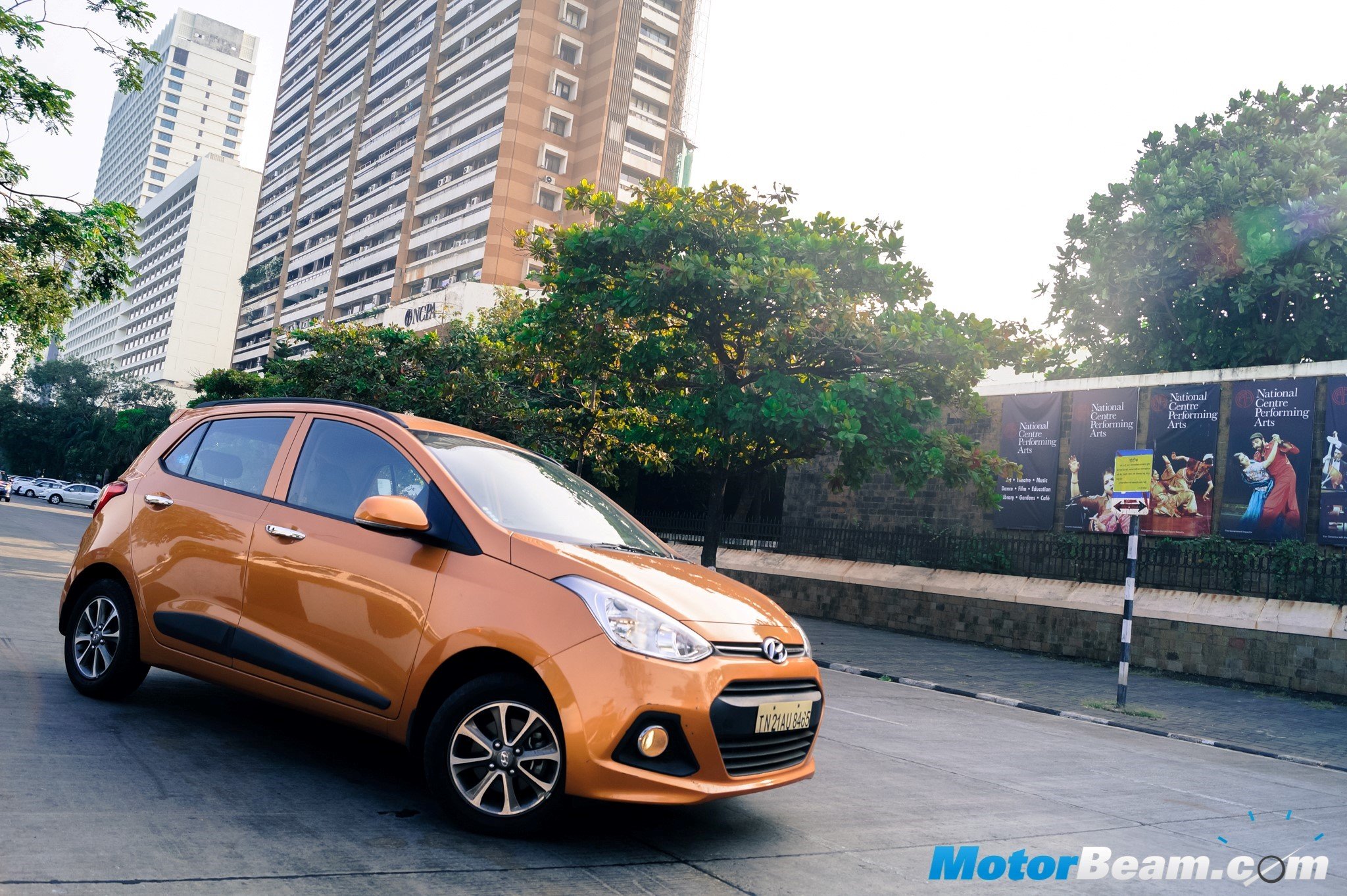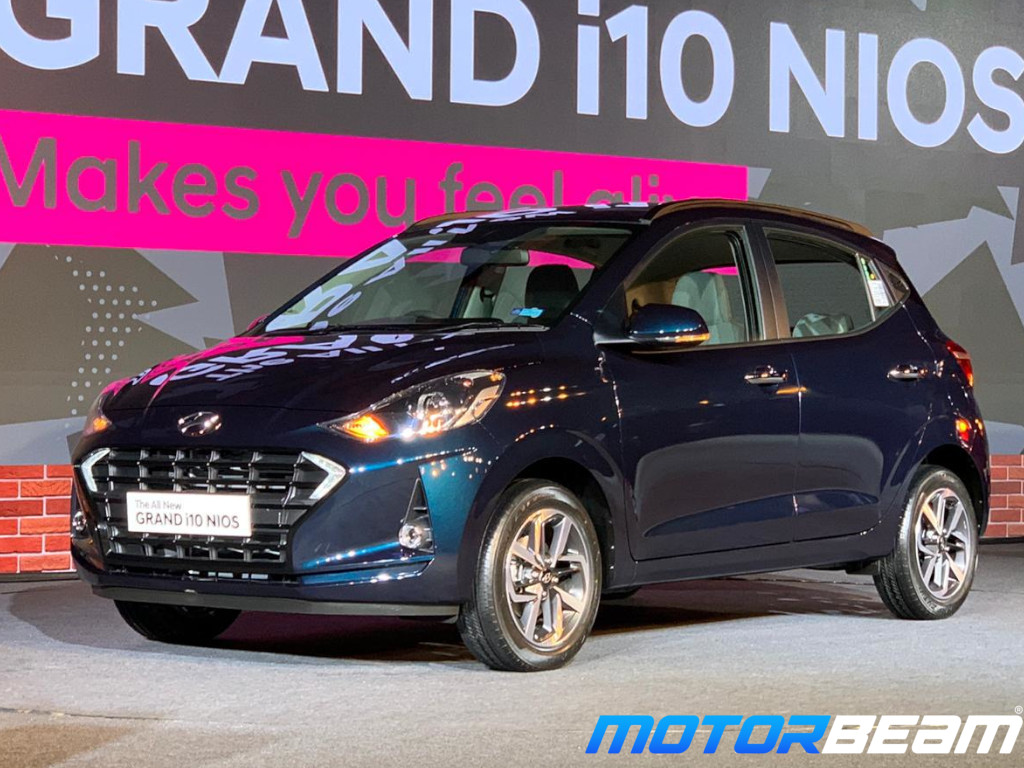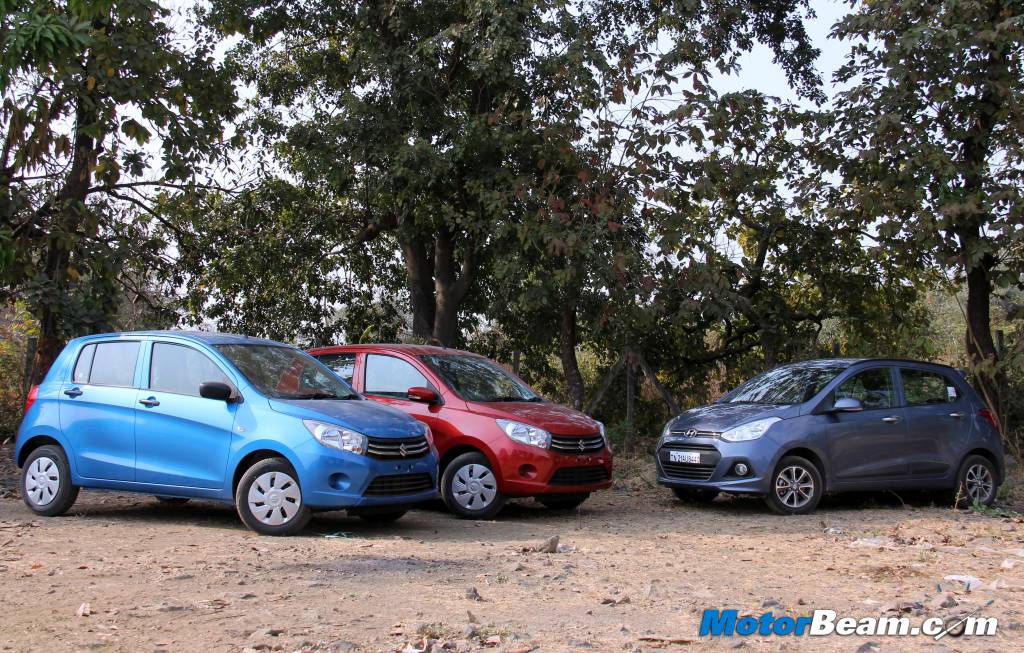
Shootout: Maruti Celerio vs Hyundai Grand i10
Price OTR Mumbai: Rs. 5.88 lakhs (Celerio ZXi Option), Rs. 6.52 lakhs (Grand i10 Asta Option)
The Hyundai Grand i10 is a much superior car than the Maruti Celerio, period.
Small cars aren’t small anymore, at least not when it comes to space and equipment. This is something Maruti Suzuki’s Swift started and now Hyundai has taken it a step further with the feature loaded Grand i10, a car which has won many accolades the world over for offering terrific value. Maruti Suzuki was caught unaware with the launch of the Grand i10, a car so good in multiple ways that we even put it against the highest selling premium hatchback in the country. India’s largest carmaker is now bringing the Celerio to rival Hyundai’s latest but can Maruti Suzuki put up a tough fight against the Grand i10? While on paper, the Celerio simply can’t match the Grand i10 but Maruti Suzuki plans to pitch the car against the Grand i10 and thus the pricing would be done accordingly. Looking at the prices of the A-Star and regular i10, there is no doubt the Celerio will be priced in sniffing distance of the Grand i10. Furthermore, Hyundai only sells the Grand i10 in global markets (the second generation i10 is the Grand i10, sold as the new i10 outside India while the Indian i10 has been discontinued in other markets) and the Celerio being a global model, will thus compete with the second generation i10 the world over. So in usual MotorBeam fashion, we got hold of both the cars and put them through our comprehensive shootout tests.
Motor Quest: The Celerio also replaces the Splash (Ritz) globally and thus will rival the Hyundai Grand i10 in global markets. The Celerio has been designed keeping the Grand i10 in mind and that shows.
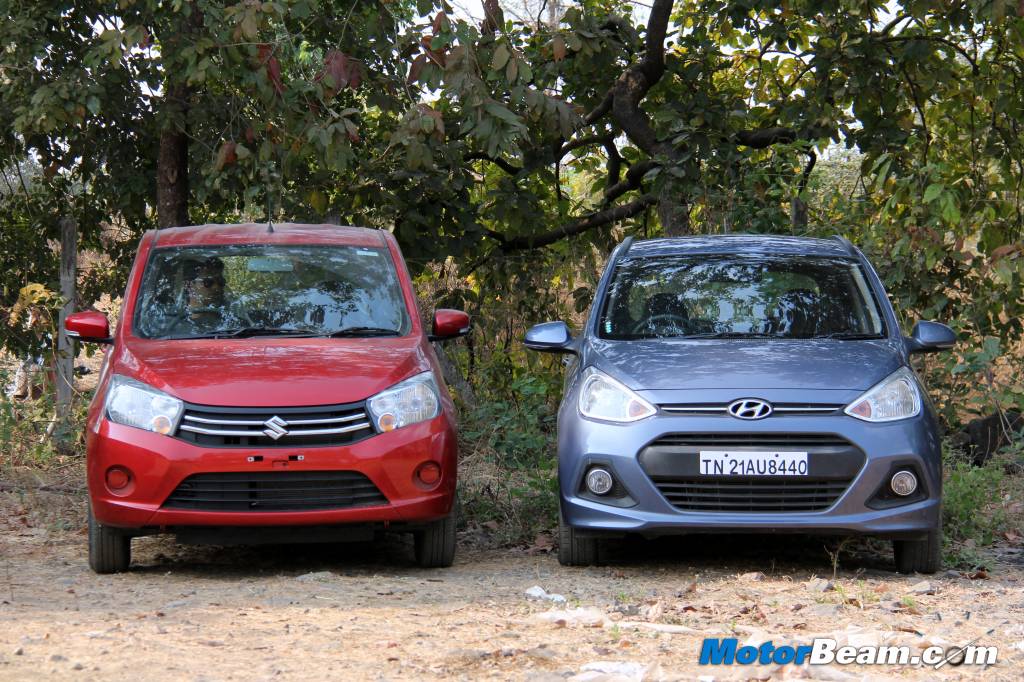
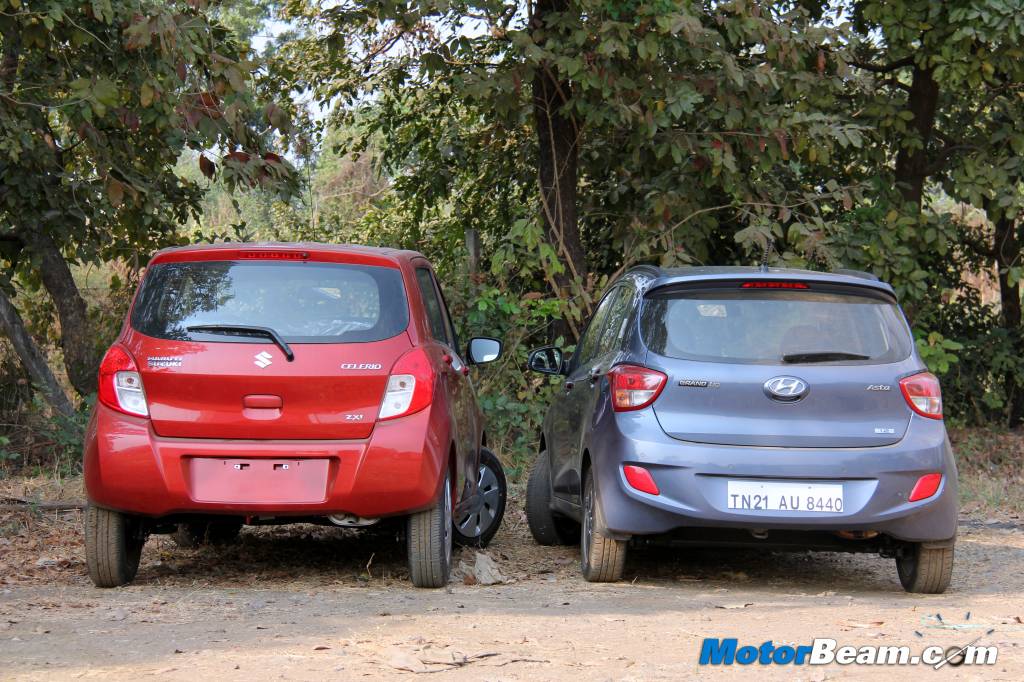
Hyundai Grand i10 is much more appealing than the Maruti Celerio, no matter from which angle you look at them
Styling – The Hyundai Grand i10 is bigger than the Maruti Celerio in every way, except the height as the latter is marginally taller. The Grand i10 looks modern and fresh, it easily comes across as a vehicle designed very recently to appeal to a younger audience. Parked next to the Grand, the Celerio looks outdated, it feels a generation old already. The Grand i10 feels like it has been designed at one go while the Celerio appears to be designed in multiple sessions, with different designers working at the front, side and rear.
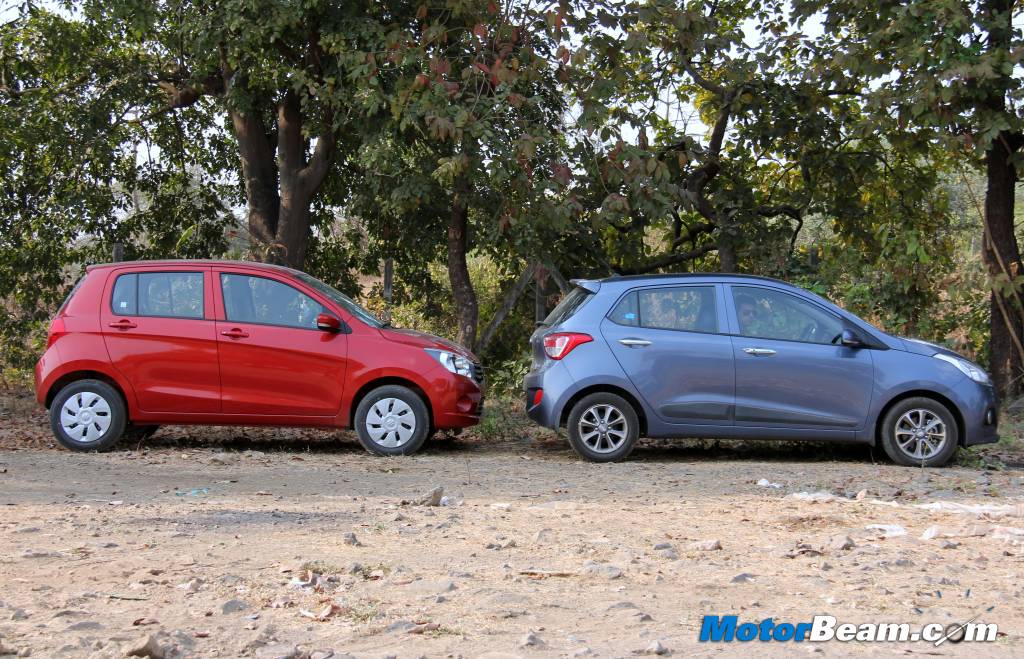
What really robs away styling appreciation from the Maruti Celerio is that it looks like a mix of multiple vehicles. The rear is the most disappointing as it comes from the Alto 800, which itself looks a design from yesteryears. The proportions of the car are very ungainly and there isn’t anything to break the blandness. With the Grand i10, Hyundai has put a lot of styling elements to the car, like the roof rails, body side mouldings, rear spoiler and chrome door handles. The lines are flowing and this is a car which you would immediately appreciate for its attractive appearance.
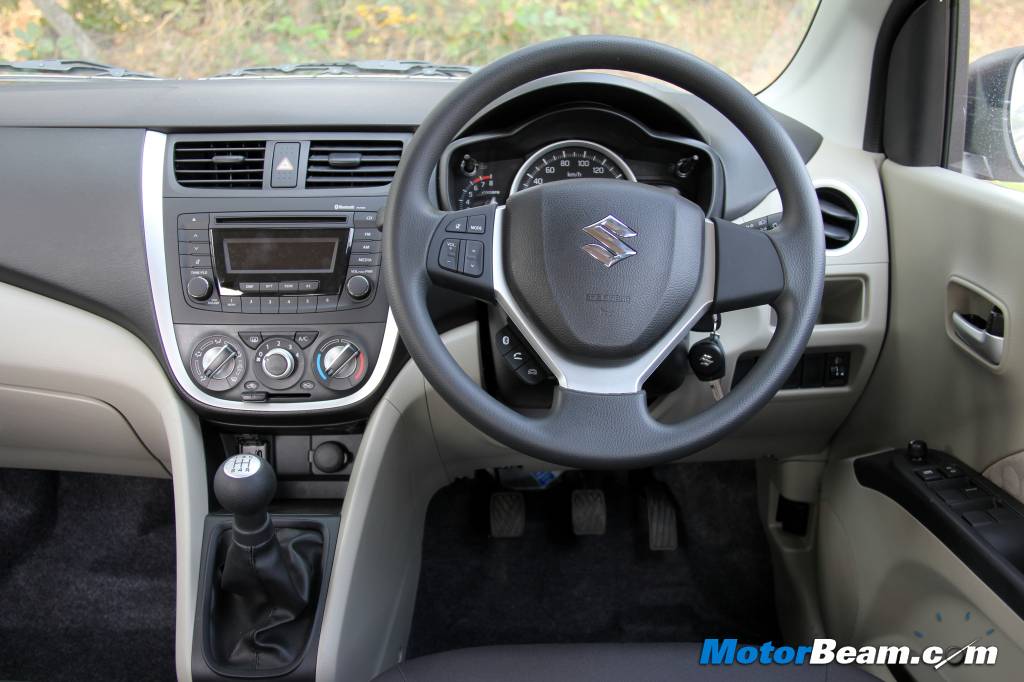
Interiors – The Maruti Celerio has an attractive dashboard design and that’s thanks to many parts coming from the Swift. However, in front of the Hyundai Grand i10, it simply fails to make an impression. Not only is build quality much better in the Grand, there is nothing to fault with its interiors, fit and finish considered. In the Celerio, there are some panel gaps which reveals the poor fit. The Grand i10 also beats the Celerio when it comes to equipment levels even though the Celerio is decently loaded, the Hyundai being a step up thanks to smart key, push button start, 1 GB storage for audio system, electrically retracting rear view mirrors, rear AC vent, rear parking sensors and ergonomically placed steering buttons.
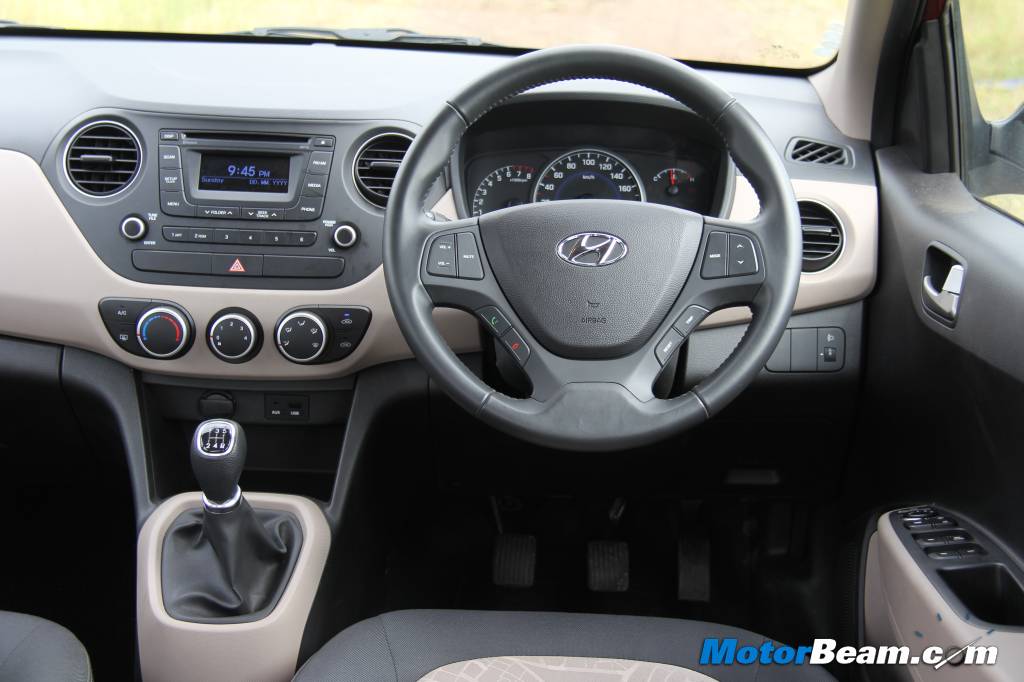
Quality in the Grand i10 is much superior and the dashboard features a very classy design with the round AC vents. Both cars feature an identical wheelbase of 2425 mm but Hyundai has managed better packaging and thus the Grand i10 is a car which doesn’t feel like a hatchback when it comes to rear seat space. Interior room of the Grand i10 is much more than the Celerio and the Hyundai also boasts of more storage spaces inside. Both cars feature integrated headrests in the front seats but the Grand i10’s seats are more comfortable. Even the rear seats are better which get adjustable headrests in the Grand i10 (all headrests in the Celerio are fixed). The Celerio being taller offers better headroom though. The Grand i10 also boasts of a bigger boot than the Celerio by 21 litres.
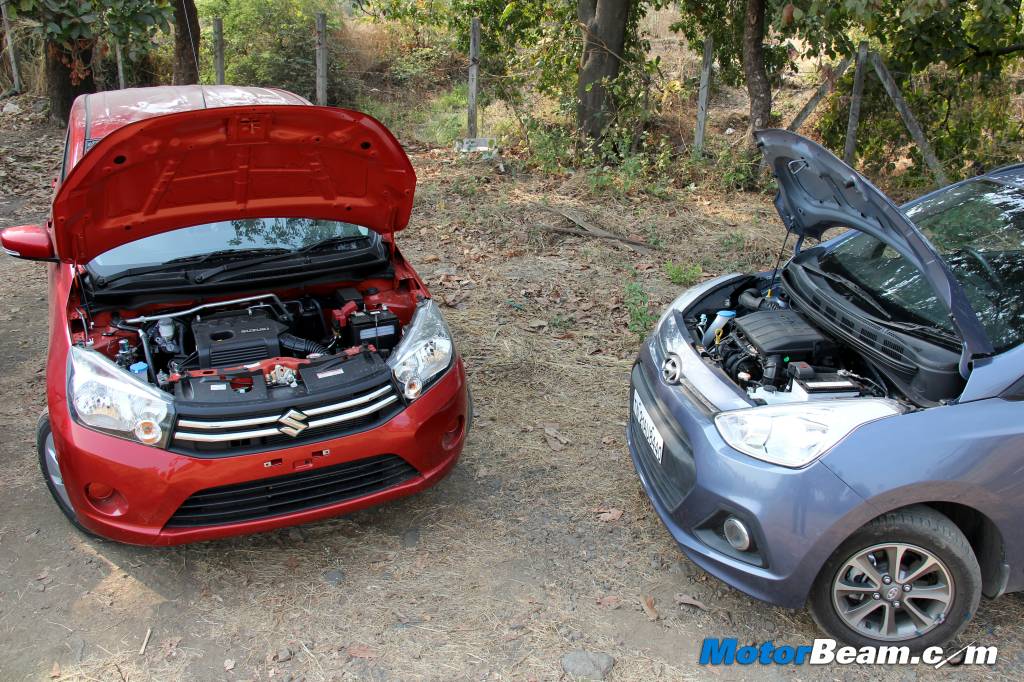
Performance – The difference between the Grand i10 and Celerio get further amplified when you look at the powertrain options. The Celerio uses a smaller, 998cc engine which Maruti Suzuki likes to call K-Next. Hyundai on the other hand uses a bigger 1.2-litre engine which gets VTT and is called the Kappa mill. There is a world of a difference between both these engines and it isn’t even an orange to orange comparison. Hyundai’s engine is a 4-cylinder with fantastic NVH levels that you can barely hear the motor at idle. Maruti Suzuki’s 3-pot mill has poor NVH levels and the complete car vibrates at standstill. The Grand i10’s superior performance is easily apparent once you get on the move, the car simply performs better throughout the rev range, whether it’s pottering around town or zipping on the highways. Top speed of the Grand i10 is 15 km/hr higher than the Celerio.
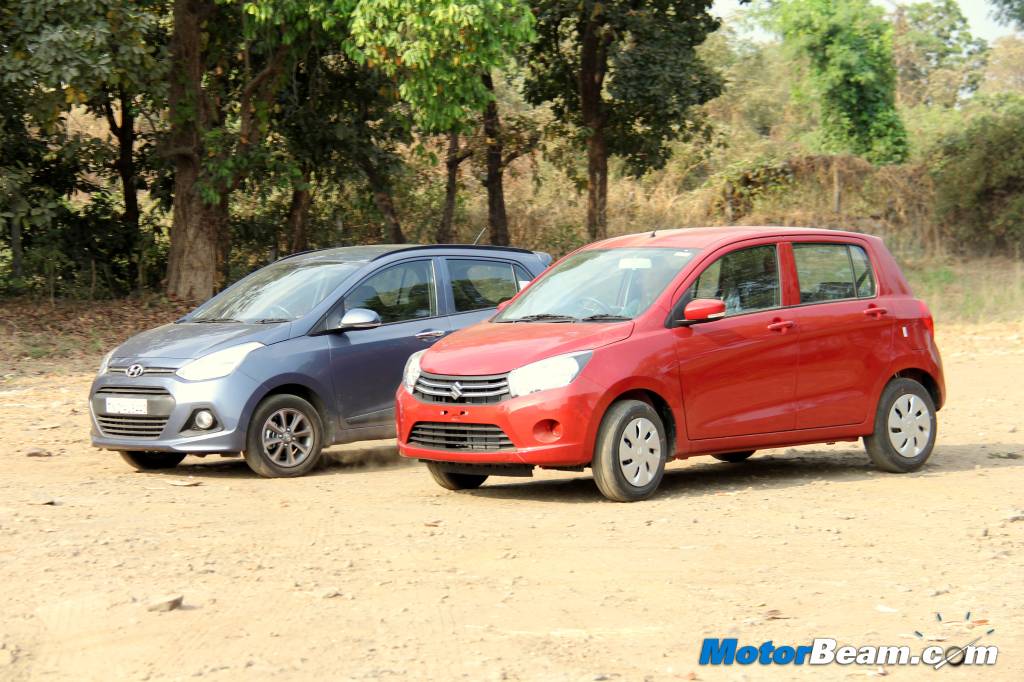
The Grand i10 outputs 83 PS and 114 Nm while the Celerio produces 67 PS and 90 Nm. 0-100 km/hr timing difference is just 2 seconds apart which doesn’t seem much considering the power advantage with the Grand i10 but when you factor in the weights of the car, you realise why the Celerio is decently quick off the block. The Celerio does feel coarse near its redline and the Grand i10 is much better when it comes to top-end refinement. Maruti ‘Mileage’ Suzuki doesn’t believe in safety and the Celerio is another tin-box from the company, weighing a mere 830 kgs. This results in not only poor vibrations but also results in road and wind noise creeping inside the cabin. The Celerio is more frugal and will return 2 km/l more over the Grand i10 (the Hyundai has a 7-litre bigger fuel tank). Both cars use 5-speed manual transmissions, the Grand’s unit offers smoother shifts and one need not rev the car at starting speeds like in the Celerio which tends to stall when moving standstill.
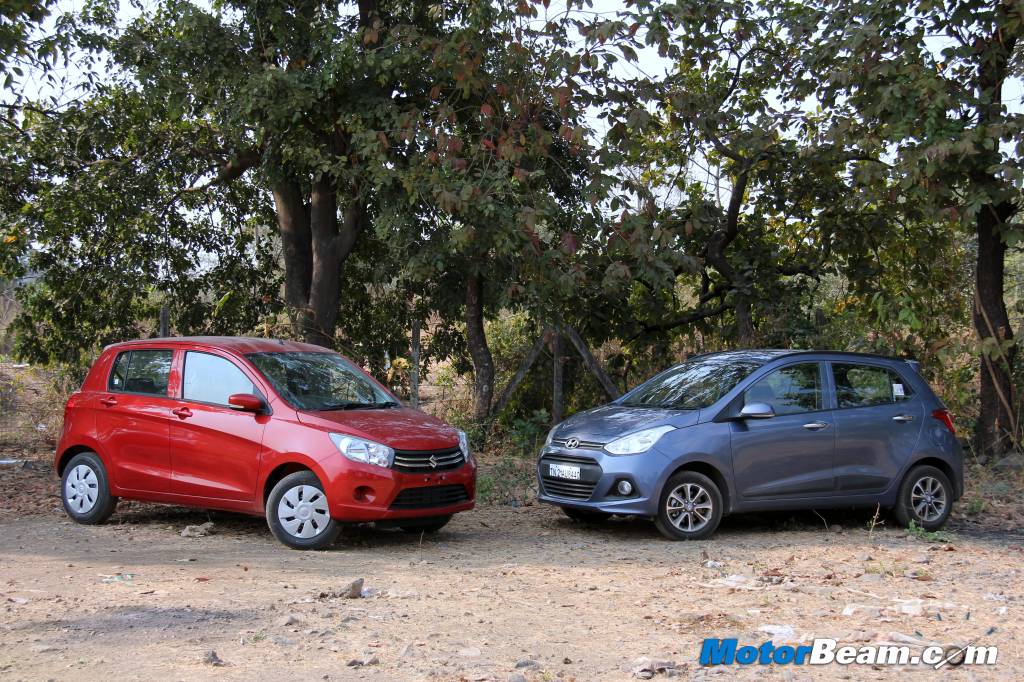
The only area where the Maruti Celerio pulls out a strong advantage over the Grand i10 is the Auto Gear Shift version. While Hyundai offers a 4-speed automatic gearbox in the Grand i10, the Celerio uses a cost effective Automated Manual Transmission which uses the same 5-speed gearbox as the manual version. The Grand i10 uses a torque converter but since it’s a conventional automatic, the cost is higher too (around Rs. 87,000/- more expensive). The Celerio’s Auto Gear Shift is a bit jerky but won’t cost as much over the manual version, making it an attractive proposition for ease of driving. You also get a manual mode which let’s you control the gears completely.
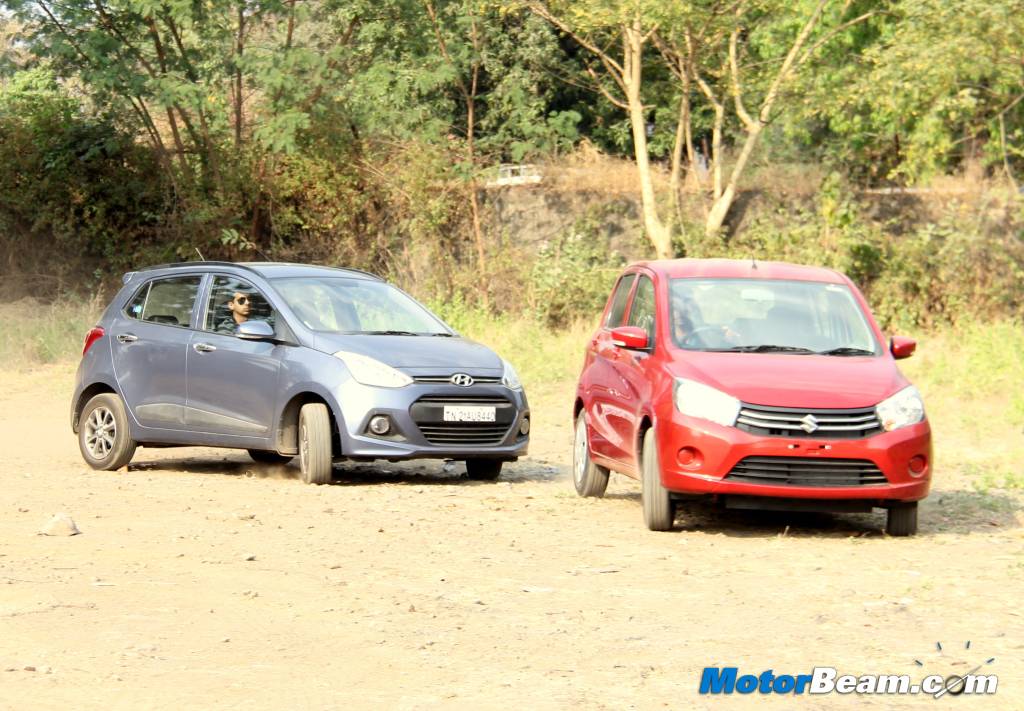
Driving Dynamics – Both cars come with similar suspension hardware along with same width tyres but there is quite a lot of difference between these vehicles when it comes to on road behaviour. Both cars have extremely light steering at low speeds, the Hyundai’s being even lighter. Both cars are extremely easy to manoeuvre in the city and tight parking spots is never a trouble for either as both have the same turning radius too. The Grand i10 rides better than the Celerio and that’s because the Hyundai doesn’t make the rear passengers feel uneasy at speed, where the Celerio can get a bit bouncy.
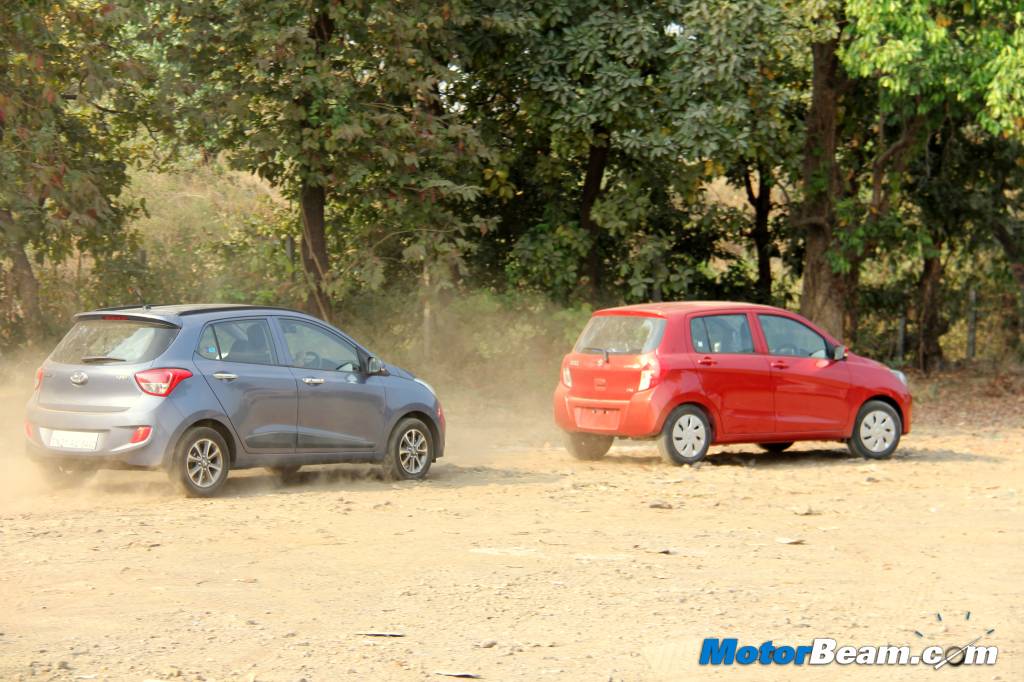
Both cars offer good high speed stability but the Celerio is more chuck-able into corners. Both cars uses an electronic power steering unit and neither weigh up brilliantly at high speeds, offering only average feedback to the driver. The Grand i10’s suspension feels more maturely set up and noise inside the cabin is almost absent (be it wind, tyre, engine, road or suspension noise). Braking performance of the Grand i10 is better and it’s shocking to see Maruti Suzuki not offering ABS on the Auto Gear Shift version.
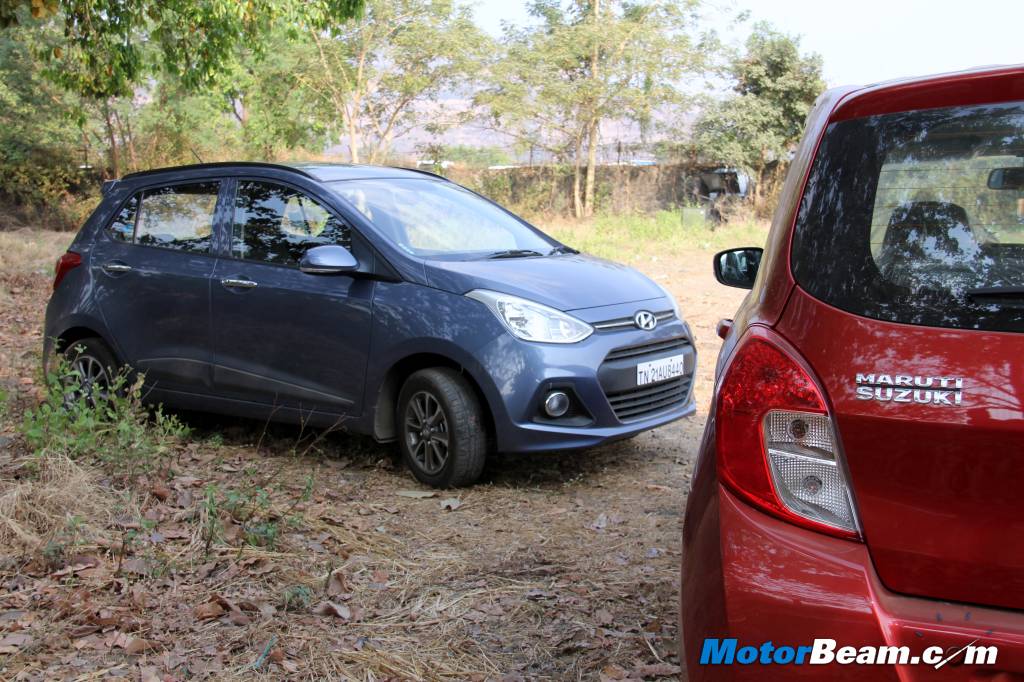
Verdict – Clearly the Hyundai Grand i10 is a much superior product over the Maruti Suzuki Celerio, which feels a complete segment down in comparison. Maruti Suzuki could have given the Celerio a chance to rival the Grand i10 but the automaker has cut corners extensively in several areas, most of which are immediately apparent. The Celerio will be priced slightly cheaper than the Grand i10 which will make a strong case for it but the extra you pay for the Grand i10 is worth every penny. If you want a cheap automatic car, the Celerio is an option worth considering but for everything else, the Hyundai Grand i10 is simply the better car amongst the two.
The Hyundai Grand i10 is drastically better than the Maruti Suzuki Celerio in most aspects and even though India’s largest carmaker has upped its game, it’s not enough to come close to the Korean automobile, let alone beat it.
Further Reading –
Hyundai Grand i10 Review
Maruti Celerio Review
Grand Hatchback Shootout


